Shri Krishna Leela ka Adhyatmik Arth.
Shri Krishna Leela ka Adhyatmik Arth.
The Spiritual meaning of Shri Krishna’s Pastimes.

From the book LEKH aur UPDESH
In the Updesh section – compiled in Hindi by Smt Dhiruben Patel. (Updesh by Gurudev on 10/8/1938.)

(Ved Darshanacharya Sadguru Gangeshwaranandji Maharaj)
The more we are contemplating on the leelas of Shri Krishna’s character (who is the epitome of pleasure), greater is the joy we are receiving.
Why will we not experience joy when the Lord’s character is also portrayed in the great scripture Shreemad Bhagwad Puran? This Puran shows us the path to
moksha besides giving us pleasure. Tales of His birth and lifetime leelas are described in this great epic. He himself has said that about His character
in the Bhagwad Geeta –“My birth and my deeds are both divine” (Ch 4-Verse 9).
“The knower of my transcendental /esoteric (alaukik) birth and actions is not born again, he comes to me O !Arjuna.”
The one who is surrounded by doubts and has no faith cannot understand this unless he contemplates on this with complete faith.
Today we shall reflect on the spiritual aspects of Shri Krishna’s pastimes which have been described in the above mentioned Puran .
Vyasji had already explained the gross tales in the other Puranas but he was not still satisfied. On the suggestion of Narad Muni he composed yet another
Puran wherein he elaborated all the divine mysteries .By merely studying this scripture we can be illumined about our existence and become ‘Atma Gyani’.
We appreciate the Bhagwad Puran for its format of –speaker and audience.
A king who is approaching death (Parikshit) is the audience and the speaker is Shukdevji , who is free from all worldly desires .
We cannot expect tales that are Rajo-guna in nature between these two great people. Parikshit had realized that all the worldly things are temporary in
nature and because of that he had no attachments and desires left. His only desire was to achieve self realization within the last 7 days of his life .
All of you know how a person chants ‘Ram-Ram’ when approaching death. Parikshit thus became deserving of Self Realization( Atma Gyan).
On the other hand, there are not enough words to describe Shukdevji .He was the knower of Brahman of the highest order (a Brahm Gyani).
He had no use of worldly things and considered the world a dream state. He was free from joy and sorrow , happiness and pain, prestige and dishonor
and moved around as a Digambar Saint (the one who wears no clothes). In this milieu it was but natural that the highest truths of spirituality be discussed.
All tales of Shreemad Bhagwad are spiritual (adhyatmik) in nature.
From Chapter 25 to 29 in the Bhagwad the stories of Puranjan are described and this Puranjan (meaning life in hindi)is none other than the Atma.
This Atma’s queen is Rani ‘Buddhi’. A five hooded snake stays with this queen. The ‘snake’ here means’Prana’. The five heads of the Prana (snake)
are Prana, Apana, Vyana, Udana and Samana.

The King (Atma) has nine doors to his palace. These nine doors in the context of the body are –
2 eyes
2 ears
2 nose
1 mouth
2 lower openings in the body
Based on the above, the Puran has given us one formula, just as students are given formulas at school to work out and get results. We should also try and work out these formulas.
In the Bhagwad Puran Shri Krishna is described as a ‘Makhan Chor’ and by His leela of stealing the butter He indicates that there is butter hidden in
the milk which He steals .He seems to say that just like my makhan chori a devotee should take out(steal) the butter from my leelas (the true meaning of the pastimes )
and enquire about my true nature (tattva).
Science has two branches –
Theory (siddhant)
Practical(Prayog)
A scientist may understand principles based on theory but is only convinced when he confirms the same practically.
You have not got a laboratory to experiment these leelas , so today I shall experiment the various leelas and prove them to you and remove all doubts.
First we shall talk of the ‘Kubja leela’. We had explained the gross meaning earlier and today let us understand the high philosophy behind it.
The difference between the sweet leelas and the high philosophy is very wide but there is no need to fear or be apprehensive about it.
For great devotees like you it should not be difficult .When a scientist can claim to bring out the sentient from the insentient (niraakar se aakar) with their
total commitment, then we too can also easily prove the spiritual meanings of the leelas.
Just pay a little attention —
“Keeda Jara Sa , Jo Patthar Mein Ghar kare ……Insaan Woh Kya, jo Dil-e-Dilbar(Lord) Mein Ghar kare! ”
A small insect can have the courage to make its house in a stone and an Insaan (human) who is able to make his abode in the
heart of his beloved Lord is indeed remarkable.
KUBJA LEELA
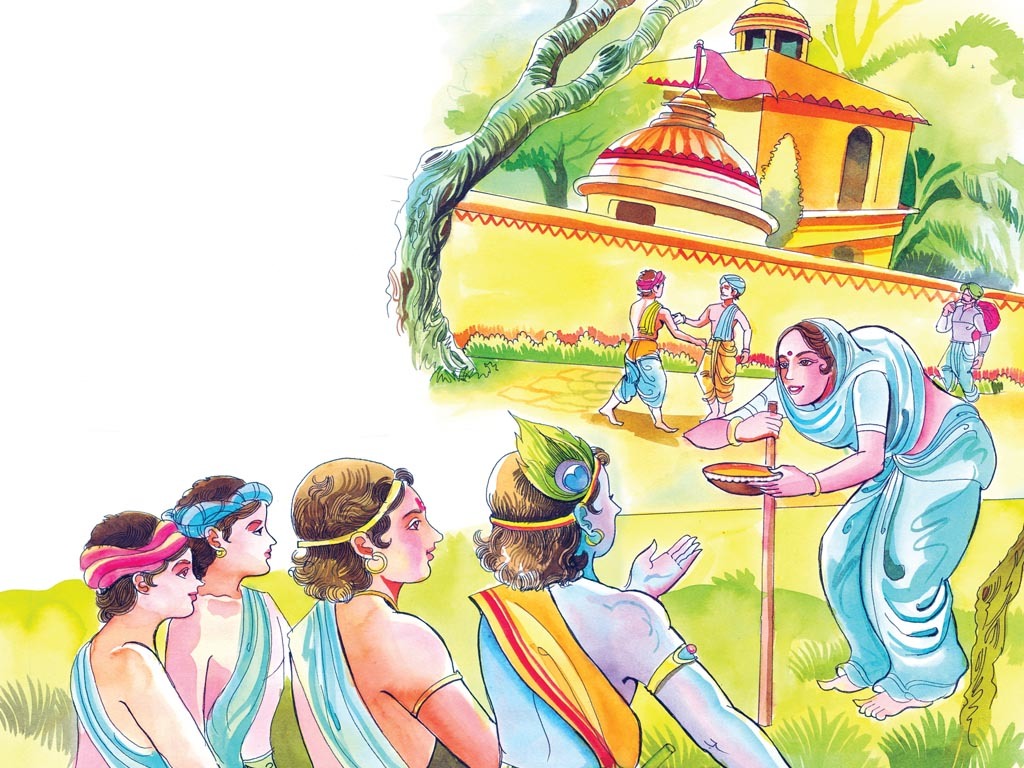
In the context of the Kubja leela let us understand now a new meaning.
We have 2 kinds of buddhis—
One that goes on the ‘Sanmarg’ (the right path) and the other that goes on the ‘Kumarg’(the wrong path).
The buddhi that follows the rules prescribed by the scriptures and has interest in doing good work is on the path of ‘Sanmarg’
and the one that does just the opposite is on ‘Kumarg’. ‘Kubj’ means crooked or opposite .
The buddhi that is not according to the scriptures is ‘Kubja Buddhi’.

‘Kans’ means Ahankar (ego).
KA—Sukha (happiness)
SHYATI—Destroys
The one who destroys our peace and joy is ‘Kans’. An egoistic person can never get peace and joy .I am rich , I am charitable , I am the best ,
I am brave—such thoughts that sit in the ‘Antah Karan’ (the seat of thoughts and feelings) are ‘Kans’. Till such times that the Kubja Buddhi offers
flowers and garlands Kans (fans the ego) a jeeva remains ‘Kubja’ (bent like her for she is described as hump backed) going on the path of ‘Kumarg’.
With the blessings and mercy of Gurudeva , when she does not acknowledge Kans and instead offers the flowers to Shri Krishna (she goes on the right path)
and meditates on the Lord , the Lord then Lord kills ‘Kans’(the ego) and pats His hand on Kubja and she immediately becomes straight.
From Kubja she becomes ‘Sarla’(straight).
The touch of the Lord is symbolic of His mercy (kripa).The main instrument to steer the buddhi from the wrong path to the right path is ‘Bhagwat Kripa’(the grace of the Lord).
GOVERDHAN LEELA

Next let us understand the ‘Goverdhan leela’. Goverdhan signifies the body. The senses thrive or are affirmed and nourished staying in the body.
Through the mouth we eat and drink and nourish our body and similarly all senses work in the same way. The ‘Goverdhan (body)’ is responsible for the functioning of the senses.
Man gets greedy in the worldly objects and serves ‘Indra’(king) in the hope to earn something. This is sure to lead to one’s ruin of Prana (one’s soul ).
When we walk on the principles of Vedic teachings there is a rise (evolvement) of the soul (Prana).
Our attempt to attain realization is “Goverdhan Leela’. This way we are not wasting this precious human birth.
SHRI KRISHNA’S 16108 QUEENS.

Now we shall explain the Adhyatmik meaning of the 16108 queens of Shri Krishna. Let us first understand the creation of ‘Shrishti’(means creation in hindi)..
This ‘Samsara’(roaming about through births and re- births) is born out of ‘Maya’ also known as ‘Prakriti’.
Prakriti means –‘’krito’—creation of samsara. Parakrishta-The devi who is deft at the creation of the Samsara .
This Maya is a mix of three ‘gunas’(qualities). Sattva, Rajas and Tamas.
Thus the world created by her also becomes enriched with these three qualities.
Sattva Guna gives ‘Sukh’(happiness).
Rajo Guna gives ‘Dukh’(unhappiness).
Tamo Guna gives ‘Moha ‘(delusion).
All results of happiness and joy, unhappiness and delusion in samsara are the result of these three gunas and so Prakriti is called ‘Trigunatmika’(having 3 qualities).
A child who is beautiful is a source of joy to his parents and to the enemy he shall be a pain (dukh).To the one who has no children that same child
will be a source of attachment (moha). In this one child we observe 3 gunas.
In a ring there is a presence of three metals, gold brass and iron. The source of all happiness and joy is this Trigunatmika Prakriti.
The mother of ‘Samsara’ (Vishnu Janini) the ‘Mool Prakriti’ (mool means root) gives rise to Mahatattva which in Puranic language is called ‘Bramha’.
The result of Mahatattva is ‘Ahankaar’ (Pride) which is described as Prajapati.
Prajapati is one of the ephitets of ‘Hiranyagarbha’ as He is the Lord of all beings in creation .Being the second aspect of ‘Brahman’ or the Pure consciousness and associated with ‘Ajnana’ (Ignorance or nescience).
He is associated with the totality of the subtle bodies in creation permeating them like a ‘thread through the beads’. The name ‘Sutraman’ is thus also given to Prajapati.
He is also called ‘Prana’ as he is the subtle principle of life .
The un-manifested , seed state of creation is compared to a golden egg and since Prajapati keeps it in his ‘womb’ before manifesting it, He is also called ‘Hiranyagarbha’.
He is endowed with the 3 powers of will, knowledge and action–
Iccha Shakti
Jnana Shaktu
Kriya Shakti
( the explanations are not in the updesh but was added to make this complex topic more understandable).
Ahankaar is 2 kinds—Sattvic and Tamasic.
Tamas Ahankaar is the Panch tanmatras also called Sukshm Bhuta’(the 5 elements).
These 5 primordial elements manifest from the ‘Atma’ associated with ‘ajnana’ or ignorance . Each one of them contains one quality and that is only that one quality. For instance.

- ‘Akasha’ –has only sound or vibration (shabda) and hence it is called ‘Shabda Tanmatra’.
- ‘Vayu’—has touch as its characteristic and so it is called ‘Sparsh Tanmatra’.
- ‘Agni’ –is called ‘Roop Tanmatra’as it has the characteristic of vision.
- ‘Apas’—It is called ‘Ras Tanmatra’ as it has the characteristic of taste.
- ‘Prithvi’—is called ‘Gandha Tanmatra’ as it has the characteristic of smell.
These 5 ‘Tanmatras’ are also called ‘Sukshm Bhuta’(subtle elements) or also called ‘Apanchikrtabhutas’ (uncompounded elements).
Further creation takes place out of these 5 elements associated with the Atma ( the Self).The Upanishads affirm that Brahman the Absolute ,the one
without a second ,is the only Reality which appears to be divided into innumerable beings on one side and countless objects on the other.
The word ‘Atma’ is often used as a synonym of Brahman , it is more commonly used to indicate the ‘Individual Self” or the essential nature of the
‘Jiva Atma’ Ultimately it is also SAT CHID ANANDA or existence , knowledge and bliss absolute.
Mool Prakriti, Mahattattva, Ahankaar and the five elements (earth, air , water, space and fire ) are the 8 main Prakritis according to Sankhyan Philosophy.
The Sattvic Ahankaar gives rise to the 5 sense organs of action and the Mind. The 5 subtle elements thus give rise to 5 gross elements (sthula bhuta)
touch,vision,taste smell and sound. These are 16 in number and are called ‘ Vikrittis’ (distortions ).
Out of these 5 elements several other manifestations pervade everywhere in a changed or distorted form (vrittis).
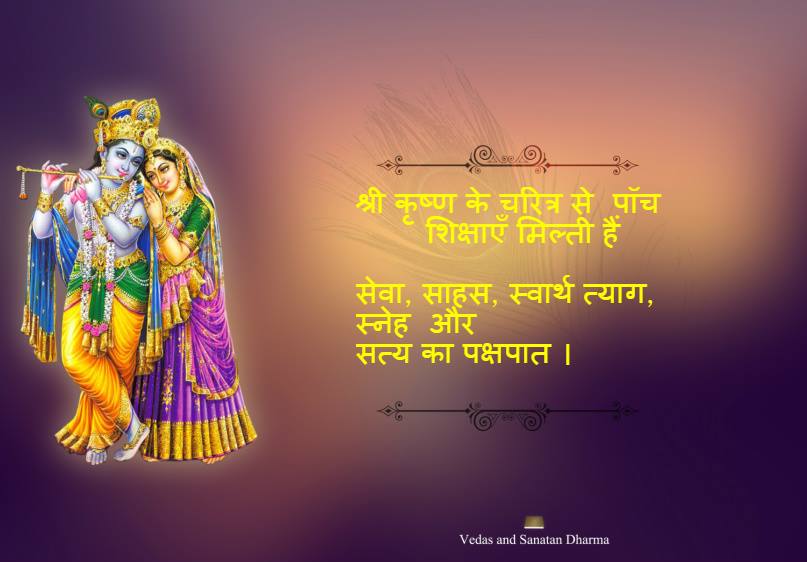
Shri Krishna’s 16108 wives are—
8 Main Prakritis
Several Creations in Samsar that arise out of the 5 elements—
‘Prithvi, Jal, Tej,Vayu, and Akash.’ .
This philosophy is in agreement with the Sankhyan theory of creation. It is the duty of a woman to be under the husband and similarly all
creations of Prakriti are under “ParamPita ParamAtma’ and Prakriti is unable to do anything on her own.
Prakriti being dependant on ‘ParamAtma’ has been given a feminine form or the form of a queen .(Shri Krishna’s many queens are the manifold creations in the creation).
The ‘husband’ of all these creations is only ONE.
Now let us explain the 16108 queens in the context of Sankhyan philosophy and the philosophy of Yoga.
In the Bhagwad Geeta Ch 7, shloka 4 & 5—
Prakriti is the natural or original principle –that which produces effects. Bhagwad Geeta describes Prakriti as representing 2 aspects of the Lord’s power,
the apara (lower) and the para (higher).
Bhagwan has divided his ‘Apara Prakriti’ into 8 divisions. Earth, water, fire, air , ether , mind , intellect and ego.
‘Para Prakriti’ is the common ‘jiva’.
‘Mool Prakriti’ is the cause of everything and not the purpose or effect of all things.
The word ‘bhoomi’ in the above verse refers to the earth and the other subtle elements explained above.
‘Buddhi’ and ‘Ahankaar’ are self explanatory and the word ‘mana’ refers to Prakriti that is indescribable, inferable or something that is understood by the mind.
These 8 main Prakritis are the 8 main queens like Rukmini, Satyabhama etc , the main wives of Shri Krishna.
The mind, intellect , ego and the 5 elements in the eightfold Prakriti has come to be superimposed upon the ‘Truth’ through ignorance.
The word mind (mana in hindi ) indicates that which understands and supposes stimuli received by the sense organs and something that is indescribable.
These 8 Main Prakritis are the ‘Pat Ranis’ of Shri Krishna.
Sankhyan philosophy describes creation as outer and inner – (Bahya and Antar).
The elemental creation (Bahya)and the creation of ‘buddhi’(Antar). The other names for these are ‘BhutaSarg’ and ‘PratyayaSarg’.
‘Pratyayasarg’ is also called ‘BuddhiSarg’(creation of ‘buddhi’)’
Buddhi has 50 ‘vrittis’( distortions or modifications of the mind or we can say the feelings and emotions that arise in the mind due to the sense objects).
Out of these 5 are – ‘Viparya Vrittis’(contrariety or ignorance).
Avidya (ignorance)
Asmita (ego)
Raag (attachments)
Dvesh (jealousies)
Abhnivesh(excess attachment)
These vrittis of ignorance are also called ‘Tamo’, ‘Moha’, ‘Maha Moha’, ‘Tamistra’, and ‘Andhatamistra’ (fear of death and self destruction).
There are 28 kinds of ‘Asaktis’ (attachments ).
9 kinds of ‘Tushti’ (complacency).
8 kinds of ‘Siddhis’ (supernatural powers gained by sadhanas and spiritual practices)
All these details are described in Sankhya Karika 43(Esha Pratyayasarg) and Sankhya Karika 47 (Panch Viparya Bheda).
From the 50 types of ‘vrittis’ described in the above Karikas from 24 to 32 Buddhi ,Ahankaar. Mana, and the five senses organs also have ‘vrittis’ like—
‘Adhyavasya ’(superimpositions).
‘Abhimaan’(ego),
‘Sankalp’(determinations or will)
‘Aalochana’(criticism or reviewing )
1.Buddhi has 10 kinds of ‘Adhyvasya Vritti’.
2.Ahankaar has 10 kinds of ‘Abhimaan Vritti’.
3.Mana has 10 kinds of ‘Sankalp Vritti’.
4.Indriyas(sense organs) have 10 kinds of ‘Aalochan Vritti’.
All these total to 40.
Besides these ‘ASadharan’(special ) vrittis there are ‘Sadharan’ vrittis like the ‘Pranaadi Panchak’—the 5 kinds of ‘Pranas’.
- Prana- in the nose and responsible for respiration
- Apana- works downwards and responsible for the working of the excretor organs.
- Vyana-pervades the whole body.
- Udana—situated in the throat and its movement is poised upwards.
- Samana—is situated in the central body and is responsible for digestion.
Each of these 5 Pranas has a subsidiary called ‘Upa Prana’. The 5 ‘Upa Pranas’ are –
Naga (of Udana)
Kurma (of Vyana)
Krkala (of Samana)
Devadutta (of Apana)
Dhananjaye (of Samana)
These ‘Upa Pranas’ are responsible for belching , winking and sustaining the body respectively.
The ‘Prana Vrittis’ are thus 10.
This is called ‘jeevan’ as these 50 vrittis are also the result of ‘buddhi shrishti’.
Totally all these are 100 in number ( ‘sankhya’ –that means counting in hindi and so the tradition of Sankhya gets the name from this word that denotes count or counting).
The 100 queens of Shri Krishna are these 100 ‘vrittis’.
The 11 sense organs and the 5 elements (sthula bhuta) are the 16 ‘Vikrittis’in the Sankhyan tradition.
Numerous creations take place out of the 5 elements ( when 5 primordial elements combine among themselves by the process of ‘pancikarana’ or
quintiplication, they produce the secondary elements, the gross ones are called ‘Maha bhutas ‘ or ‘Sthula Bhutas’) .
Each one contains a part of the other 4 ‘bhutas’ and hence also their characteristics .Thousands of creations are the consequence of these ‘Sthula Bhuta’
which refer to the 1000 queens of Shri Krishna.
I hope you have understood the mystery or the esoteric meaning of the 16108 queens of Shri Krishna according to Sankhyan tradition.
The 100 ‘Chit Vrittis’ can also be understood according to ‘Yoga Darshan’ of Patanjali.
In Yoga Darshan there are 5 kinds of waves of thoughts , feelings and emotions that arise in the ‘chit’(mind)’ due to the impact of the sense objects upon
the sense organs like the eyes, ears, nose etc. They are called—
‘CHIT VRITTIS ’ and are 5 in number–
- ‘ Pramana’—the means of right knowledge.
- ‘ Viparya’—–false knowledge.
- ‘ Vikalpa’—mental picture based on hearing a word.
- ‘Nidra’—sleep.
- ‘Smriti’—memory.
‘PRAMANA VRITTIS ’ (Means of Right Knowledge ) are 3—
- ‘Pratyaksha’—Direct perception.
- ‘Anumana’—Inference.
- ‘Agama’—Words of reliable persons and scriptures.
‘PRATYKSHA VRITTIS’ are 2—
‘Bahya’-(outer).
‘Manas’-(inner).
‘BAHYA’ can be classified as:-
‘tvaaca’, ‘chakshusas’, ‘shravan’, ‘rasan’ and ‘dhanaja’.
‘Chaksus’-apprehending forms of objects is its characteristic.(product of agni).
‘Shravan’— hearing (product of akash).
‘Rasan’— tasting (product of water).
‘Tvaaca’— touch(product of air).
‘Dhanaja— smelling (product of earth).
‘MANAS’ is of 2 kinds:-
‘Sadharan Jeev Pratyaksha’-what is internally experienced by the mind like joy or sorrow.
‘Yogi Pratyaksh’-Extra sensory perception and intuitive perception by highly evolved yogis is also included in ‘pratyaksha’.
‘Pramana’ has a total of 12 as per the above explanation.
‘ANUMAAN ’ (Inference) is of 3 kinds .Ref;-(Trividh Anumanasankhya-from Sankhya Karika 5)
‘Anumana’ literally means Knowledge (mana) which follows another Knowledge.(anu).
AGAMA is of 2 kinds—
1.According to Vedic Knowledge
2.According to common knowledge.
Thus we see ‘PRAMANA’ vritti is of 17 kinds.
‘VIPARYA VRITTI’ (Ignorance)
The second vritti according to Bhedashtama Vidya Sankhya Karika- 48, is of 52 kinds.
Firstly we can categorize it into 5-
1.Avidya (ignorance)
2.Asmita (ego)
3.Raag (attachment)
4.Dvesh (aversion)
5.Abhinivesh (excess attachment to life)
The above 5 are also called:-
‘Tamo’, ‘Moha’, ‘MahaMoha’, ‘TaMistra’ , ‘AndhataMistra’(fear of death or self destruction).
Ignorance or ‘avidya’ of Prakriti ,Mahat ,Ahankaar, Panch Tanmatras makes us feel that the transient is eternal and , the impure is pure , misery is happiness and the non-Self is Self.
Ego ‘asmita’ always follows ignorance.
‘Asmita’ is of 8 kinds.
‘Raag’ is of 10 kinds.
‘Dvesh’is of 18 kinds.(it arises when there are obstacles in our desires).
Thus we have understood the 62 kinds of ‘VIPARYA VRITTI’.
The 3rd vritti is ‘VIKALPA’.—and is 1 kind.(mental pictures that arise on hearing words.
The 4th vritti is ‘NIDRA’ – and that is also 1 kind. (It is that condition of mind when modifications arise out of pre-ponderance of tamas).
.The 5th vritti ‘SMRITI’ – of 1 kind (memory of previous experiences).
Thus we see a total of 82 kinds of vrittis due to the divisions of the 5 vrittis.
To counter or oppose these vrittis it is essential to adapt disciplines like—
Dharana
Dhyan
Samadhi
Whatever we fix our attention on (Dharana) it becomes natural and continous in (Dhyana) and ultimately a state of absolute concentration
(Samadhi—an intuitive and superconscious experience ) will arise.
The subject(visheya) of ‘Dharana’ and ‘Dhyana’ is common. ‘Visheyas’ are of 4 kinds.
The 4 thoughts or subjects are-
1.Sthul—gross
2.Sukshm—subtle
3.Grahan Indriyas—Sense organs—receiving/accepting.
4.Grahita—Perciever.
In Yoga Tantra they are called :-
1.Vitark—intense awareness when the mind concentrates on a gross object.
2.Vichar—thought
3.Anand—complete bliss
4.Asmita—ego or false identification.
Thus we have to describe –
‘Dhyan’ according to the above 4.
‘Dharana’ according to the above 4
‘Samadhi” according to the above 4
Totally we have 12 ‘Visheyas’ or subjects.
‘Virakti’ (indifference) or ‘Vairagya’(detachment or spirit of renunciation) is of 2 kinds.
PARA & APARA
The Apara (Lower) Virakti is—
- ‘Yatman’—restrain of senses.
- ‘Vyatirek’—negation.
- ‘Ekandriya’—concentration on one of the senses.
- ‘Vashikar’—to subjugate.
The Para (higher) Virakti is—
Nirodh Samadhi or Asampragnyata Sampatti. {all modifications of the mind are eliminated leaving only the samskaras (the latent tendencies) behind}.
We see that there are a total of—
82 Chit Vrittis (modifications of the mind).
12 Dharana,Dhyana and Samadhi (4 of each kind).
5 Viraktis (indifferences)
1 Nirodh Samadhi.
We now get a total of 100 states or vrittis of the mind.
The 100 queens of Shri Krishna are represented by these 100 Chit Vrittis or states of the mind.
There is another mysterious meaning of 16108 queens which indicate the ‘nadis’ in our body.
As Shri Krishna is Yogeshwar Himself , it is necessary that Yog Sadhana should be there in His life. Yog Sadhana is essentially indicative to the Chakras in the body.
In Yoga Tantra and in the Upanishads the Atma is known to reside in the ‘HritPundarik’(heart), besides the head.
In the Chandogya Upanishad Ch.8 Kh.1 it is mentioned— “Within this Brahmpur , the subtle space which is like a lotus ……(indicating the Atma) .
The heart is often referred to as Brahmpur or Brahmnagar in the preceeding mantras of the Upanishad.
According to Tantra Shastra we know that the heart has 16 ‘nadis’(nerves).
We find a reference to this in the play –‘Malti Madhav’ in the 5th chapter in the Mangla Charan (invocation shloka) –
“Wherein in the center of the heart chakra the Atma resides ,that chakra is made up of 16 ‘nadis’.”
In Katha Upanishad 6th Valli Mantra 17– there is a description that says that there are 101 ‘nadis’ in heart of man.
The same description comes in Chandogya Upanishad Ch.8 Khand 6 Mantra 6 . From both these refernces it is proved that there are 101 main ‘ nadis’ in the heart.
Prashna Upanishad – in the 3rd question and mantra 6 it says—“The Atma resides in the heart .There are 101 main nadis and out of these each one
has 100 so that there are 10,000 Further the sub branches are 72 crores and 72 lakhs .Sushmuna Nadi is the main nadi out of the 101 which have a
correspondence with the 8 main chakras(psychic centers) and because of that the Sushmuna Nadi becomes 8 kinds.
In Atharva Ved -10-2-31- there is a reference to the 8 chakras in the body.
These 8 chakras are:-
- Aadhar Chakra
- Swadishthan Chakra
- Manipur Chakra
- Anahat Chakra
- Vishudh Chakra
- Ajneya Chakra
- Kurm Chakra
- Sahashtraar Chakra or the Shoonya Chakra
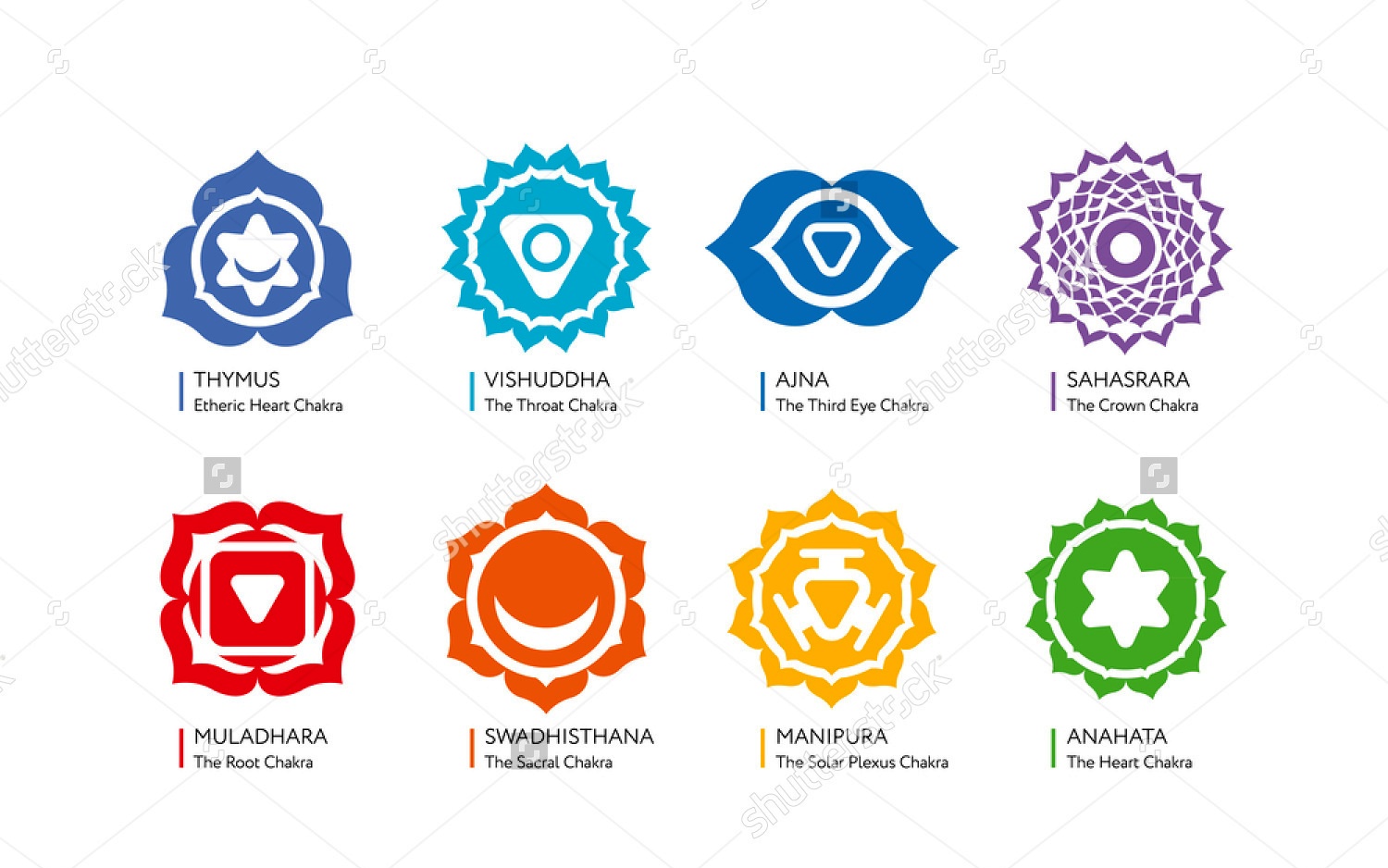
Out of these 7 are popular in Yoga Shastra but according to Vedas we must believe in the
8th chakra also .This 8th chakra is known as the
‘Kurm Chakra’(Yoga Sutra 3,31).By restraint/forbearance there is equanimity.
In the same way there are 16 main nadis that have several branches and sub branches.
Sushmuna Nadi is only one but due to its connection with the 8 chakras it is of 8 kinds.
Upanishads tell us that there are 108 nadis .We get an indication to the 16108 queens here also.
The funuctioning of these nadis depends on ‘Atmadev’ and this Atmadev is Shri Krishna who is the Swami of the 16108 queens or the 16108 nadis.
The uniqueness of Shreemad Bhagwad is this ability to expose the Adhibhautik gross truths and to also throw light on the subtle Adhyatmik realities.
There surely will be one doubt that will arise in your minds which you may not be able to express but I shall now explain it myself.
The Adhyatmik mystery behind the 16108 wives seems to denote that there were really no such queens of the Lord and that this number is just a metaphor.
In fictitious novels the incidents and the emotions may be real but the characters are not real, but we cannot say this regarding Shri Krishna .
In the stories of the Lord the characters and emotions are all real. We can throw light on this with another viewpoint.
There was a person who had great interest in satsang and usually visited saints and Mahatmas. Once he asked one of the saints to reveal a method by which he would be able to remember the method of achieving ‘Moksha’(liberation) at all times of the day.
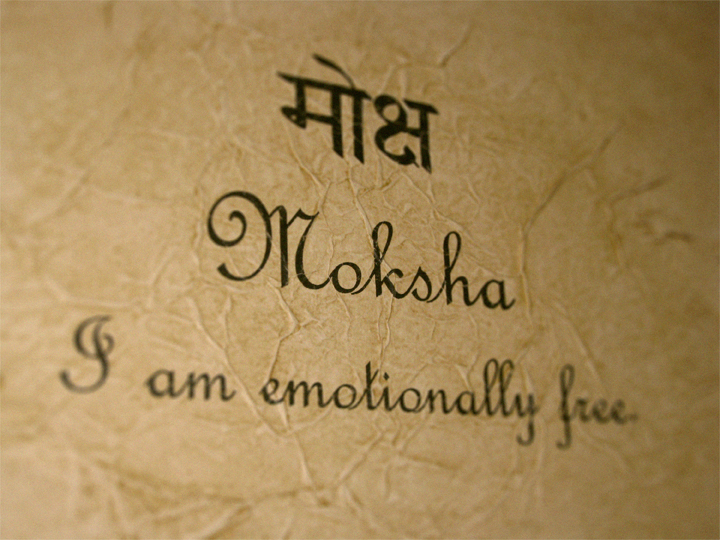
The Mahatma said—“Moksha is firstly because of ‘Viveka’(discrimination between the real and the unreal.).It means that this world is not permanent.
Mother and father were present before our eyes till yesterday and today they have gone away forever. We cannot see them again even if we spend lakhs and crores of rupees .
In the end we too shall be in the same state. In the cremation ground our beautiful body shall be reduced to ashes.”
In the context of ‘Samshaan’(cremation ground) I remember another story.
A person would often pass the cremation ground and but would try and avoid going very near it. He was afraid of the place because he believed that ghosts and spirits lived there.
The smell that came from there was another reason. Once the ‘Samshaan’ (symbolical story) called out to him and said—“O dear why are you afraid of me ?
Why are you ashamed of me? If it is not in your destiny to come here then perhaps it is alright to ignore me .
Dear friend! Please remember one day you will eventually have to come here. This is the sense of ‘viveka’ that is the result of the impermanence of the world .
This ‘viveka’ gives birth to ‘vairagya’(renunciation).The result of renunciation is knowledge and lastly the outcome is ‘mukti’(liberation).”
The learned ‘jignyasu’( the person who was keen for knowledge) kept his son’s name Vivek after listening to the story of the Mahatma. Vivek’s son was named
Vairagya and in turn his son was named Gyan Chandra or Prabodh Chandra . Gyan had no son but only one daughter , so she was named Mukti.
All these names came to be associated with this one family .You may now say that such ideals are no more prevalent in life. Vivek and Vairagya are ways and means of achieving liberation according to shastras so how can they be names of people in a family?
Names can be of people and the same names can be of certain vedic principle also. There is no futility and uselessness in this. The enquiry thus will be baseless.
In the same way Shri Krishna had 16108 wives and they indicate the esoteric meanings of Sankhya and Yoga. Our scriptures were written by the great
writers of the scriptures in such a way that the mysteries be revealed along with the realities.
Now let us explain the reason Shri Krishna was born on the ‘Ashtami’ day(eighth day of the waning moon called Krishna Paksh) .
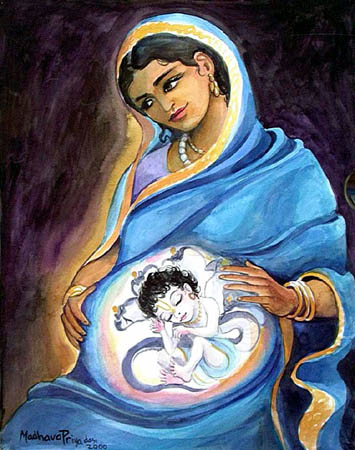
There are 8 steps to reach the Lord according to the Yoga Shastras.
1.Yam—abstention from harming others, from falsehood, from theft, from incontinence, and from greed.
2.Niyam—purity, contentment, mortification, study and devotion to God..
3.Asaan—Postures. There are 84 asanas.
4.Pranayam—controlled breathing.
5.Pratyahaar-Withdrawl of the senses from the world towards oneself.
6.Dharana—The mind is fixed on the thoughts of one’s Ishta Devta.
7.Dhyan—When the concentration becomes uninterrupted.
8.Samadhi—A state of total absorption –not being aware of one’s own existence.
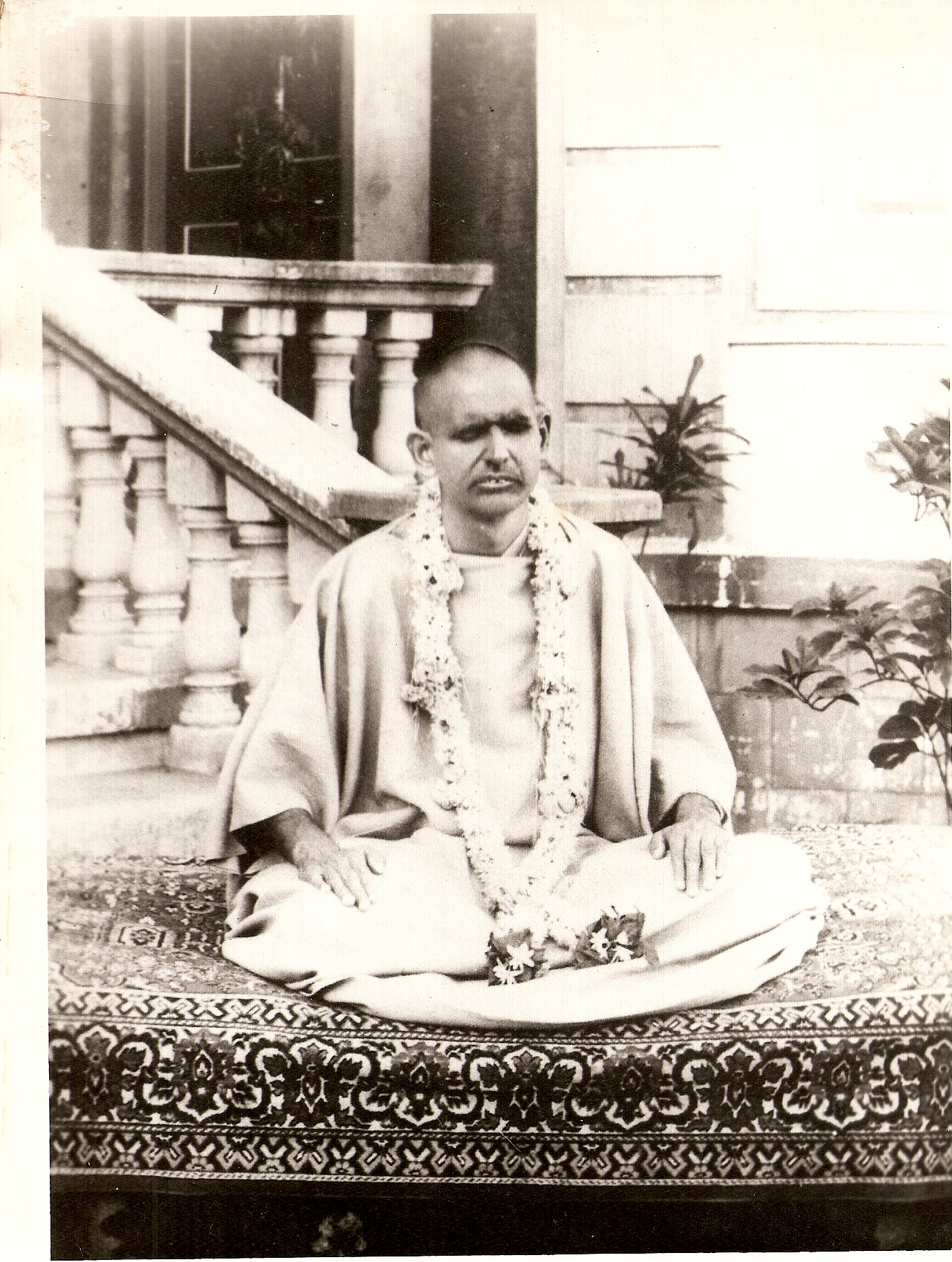
We can get the Darshan of the Lord only when we reach the eighth state of yoga i.e. Samadhi . By being born as the eighth child of Devaki (buddhi) the Lord proved that
He can be reached by the ‘Jignyasu’ only in the eighth state. His birth is on the eighth rung of yoga-samadhi.
On Ashtami day at midnight when the moon had risen , Lord Krishna descended .Before reaching the state of Samadhi there is total darkness.
On the eighth day of Ashtami the moon that rises is Krishna ( called Krishna Paksh in common language).
Just as the moon removes the darkness (ignorance) of the night, Shri Krishna removes our darkness (ignorance). He removes the ignorance that is
tamo guna in nature from the buddhi.
Being born on the eighth day the Lord proved that He was not born out of he Rajo guna nature of union for procreation . “I am the embodiment of Maya”-said the Lord.
According to Sankhya there are 24 ‘tattvas’ besides ‘Purusha’. These 24 are divided in Prakriti tattva and Vikritti tattva.
Prakriti tattvas are—
Mool Prakriti ,Mahattattva Ahankaar and 5 Sukshm Bhutas.
Vikritti Tattvas are—11 Indriyas and 5 sthula bhutas .So they are 16 in number.
The living being’s body is made up of Panch tanmatras (sukshm Bhuta),Ahankaar (Prajapati) and Mahatattva(Brahma) and the eighth one is Mool Prakriti(Maya).
The lord’s body is made up of only the eighth ––Maya (Mool Prakriti).
To project this truth the Lord took avatar on the Ashtami day.


